I’ve experimented with making longbows with four different riser layouts. Riser A represents probably the…
Low, medium, and high wrist grips for a recurve
In the previous post Grip Size of a Recurve I was asked what are good angles for low, medium, and high wrist grips. Well, I’m sure that this is subjective and arbitrary at best, so I made a simple illustration that might be helpful. You can probably print this out and adapt it for use on your own riser design, whether it is a recurve or longbow. Just orient the drawing on your blueprint to make a template, or transfer the outline to the riser block before you cut it out. There isn’t really much difference in the grip portion of either bow style if it is a sculpted grip, the rest of the riser is a bit different, but the grip portion is about the same. The shape of a sculpted grip is pretty much biomorphic (is this a word?) and three dimensional, so the angle of the grip is kind of a rough guess. Anyway, here’s the illustration…
The numbers 30, 37.5, and 45 are the angle from vertical in degrees. I’m not sure how most grip angles are measured, but this seems to make the best sense to me because a straight up and down grip of a plain stick bow would be the vertical line.
I find it interesting to note that the grip angle of a 1911 pistol…you know, the venerable and popular .45 auto…is about 27 degrees from vertical. Well, that looks to be about the case compared to the drawing I made above that is known to be 30 degrees.
You might say “that pistol appears to be loaded!” Well, yes it is, thank you very much…it is in fact cocked and locked…which is the way I keep it all of the time. How can I use it if it is not loaded and ready to shoot? Okay, enough about that. This is an archery blog…lol.
If you look at a photo of my empty hand, you can see that the pushing surface of my palm is not oriented straight up and down. In fact, the palm appears to be angled at about 30 degrees…about the same angle as a low wrist bow grip and the 1911 pistol. It is no wonder this angle seems about right for many people. But, your preference really might depend on where you came from as a shooter…stick bows, Hill-style bows, longbows, recurves, compounds, etc. Like most people, my first bows were ones that I made from sticks that I found in the yard, so they had what I call a “straight” grip. Then, when compound bows became popular, I got into shooting them and the whole high tech thing, including a high wrist grip. I shot the high wrist grip by just pushing on the web of my hand and putting pressure just on a small area of the deepest part of the grip. This seems like a good way to more easily balance the bow and for use when using sights. Then, when I started shooting traditional bows, I started out with recurves and naturally transitioned into shooting a high wrist sculpted recurve grip. Over time, and after shooting lots of bow styles, I have become more comfortable with a low to medium wrist grip that seems to fit the natural angle of my palm. Accuracy and repeatability seems to come from a natural grip instead of pushing into the web of the hand.
I know that Hill-style shooters (those who shoot Howard Hill style bows with a straight grip) like the way their hand locks into a set position on the bow handle. They seem to push with the entire surface of their palm, or more with the heel…often called “heeling the bow.”
Well, anyway, I’m sure you have your preference, so hopefully this diagram might be useful to print out and make templates for drawing out the grip shape on the bows you make.

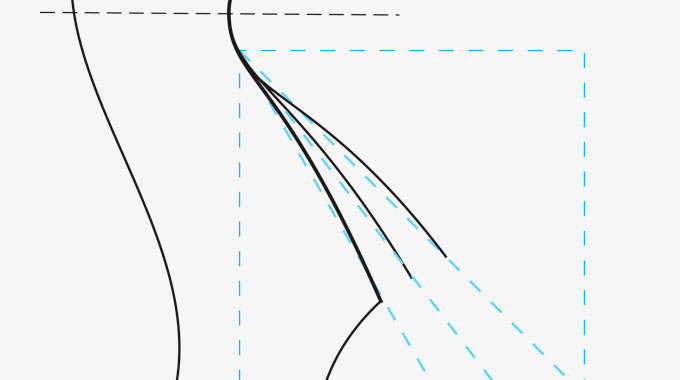
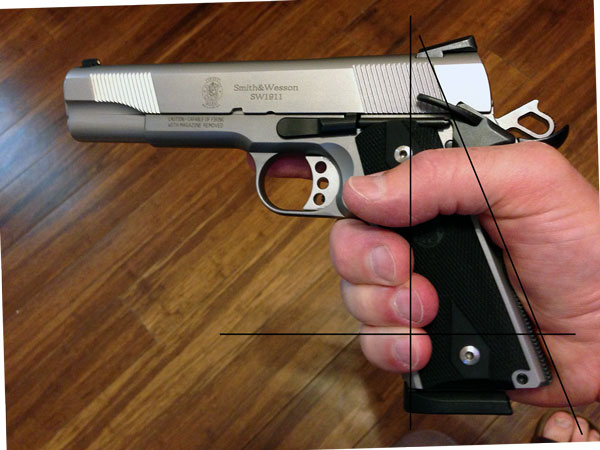
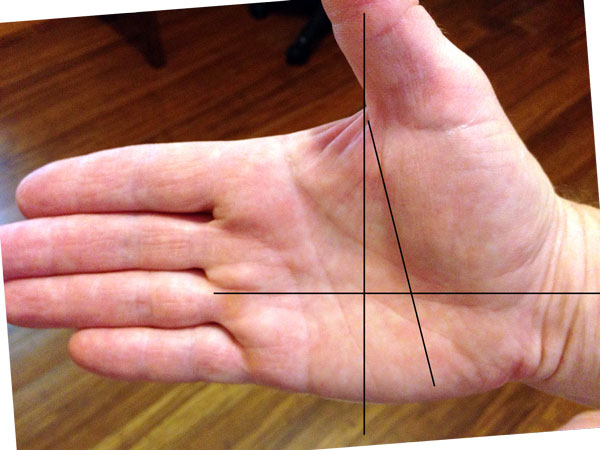
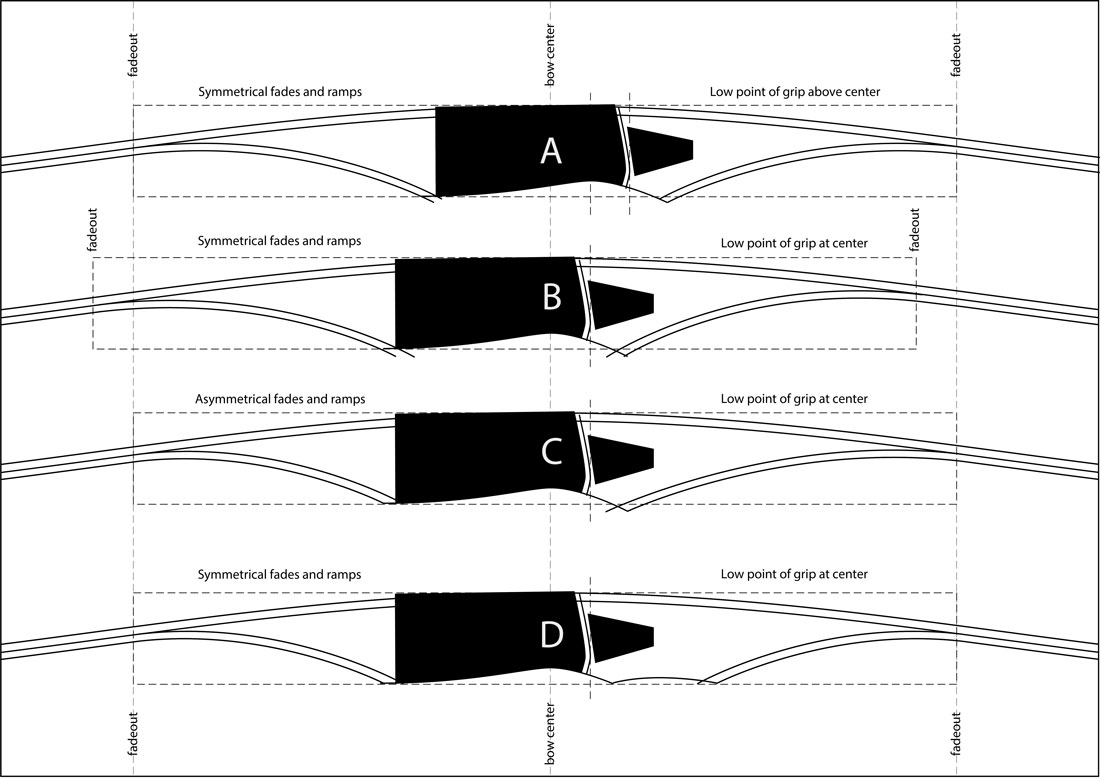
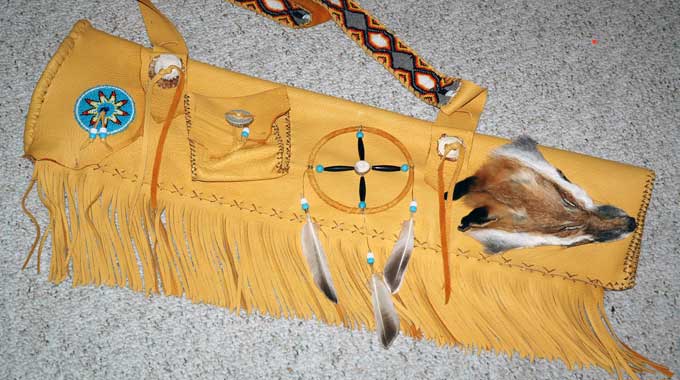

This explains it well, (and it specifies that it is the WRIST position that is either low or high within the grip, not if you tend to hold the grip at some point) but what about a longbow grip. What about a longbow low/high grip…?
This explains it well, (and it specifies that it is the WRIST position that is either low or high within the grip, not if you tend to hold the grip at some point) but what about a longbow grip. What about a longbow low/high grip…? I mean such high wrist as 45 degree, makes little sense. Is there a specific scale for longbows, or is it more like adapting it by gusto or requirement/preference?
Good story, and I like a low angled grip as well
Charles A Laster Actually a longbow has (typically) even a lower angled grip, – and good to know your preference Charles, I haven't forgotten 😉
I was a gunsmith as well for a number of years, and finding a gun with the right angle and "fit comfortably" in the hand was one of the things I stressed to new gun buyers.
Hi Jim, would you have a template or build plans for a longer (27″) wood take-down riser? I’m 5’11”, with some very long arms. My draw is 32″. I’ve looked and looked for years for a 3 pc. recurve, to either have custom made of for something used, and they don’t seem to exist. Besides traditional archery, I previously shot Kyudo (Japanese) but now I’m back to traditional and want to build my own bow. It would be a 72″ bow. Can you point me in some direction?
Thanks, James
Hey James, sorry I don’t have a riser template that long. It would probably be pretty easy to take a standard length riser and extend it out.
Thanks for your comment Jim. When you say “extend it out,” does this involve knowing anything more about the geometry of the shape? Can I jus make it longer and add thickness, etc., to it, for a bit of added strength? I would like to end up with a robust riser than will stay together.
Hey James, I’m thinking you could just make it longer, or add some deflex in shorter lengths, and/or add limb angle which should all allow longer draw length before stacking.